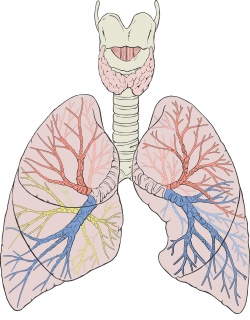Scientists create human lung in lab
18 Feb 2014
Regenerative medicine, the stuff of science fiction, took a step closer to becoming a science fact with scientists creating human lungs in a lab. But the benefit of the step would only be available to patients many years down the line.
 According to Joan Nichols, a researcher at the University of Texas Medical Branch, it had been science fiction and the research was moving into science fact, CNN reported.
According to Joan Nichols, a researcher at the University of Texas Medical Branch, it had been science fiction and the research was moving into science fact, CNN reported.
In the happy event the lungs worked, they could help over 1,600 people awaiting a lung transplant. Lungs are one of many body parts being made in the lab. A number of other parts such as tracheas and livers, would take longer to materialise.
According to Dr Stephen Badylak, deputy director of the McGowan Institute for Regenerative Medicine at the University of Pittsburgh, whole-organ engineering was going to work as a solution to the organ donor shortage.
According to Nichols, researchers in Galveston, Texas, started with lungs from two children who had died from trauma, most likely a car accident. The damage to the lungs had been much too severe for transplantation, but some healthy tissues survived.
Taking one of the lungs, they stripped away nearly everything, save a scaffolding of collagen and elastin.
The scientists then placed cells from the other lung and put them on the scaffolding. They the immersed the structure in a large chamber filled with a liquid "resembling Kool-Aid," according to Nichols, which provided nutrients for cell growth. Four weeks later, an engineered human lung had emerged.
Growing organs in a lab has been one of the holy grails of medicine. Since transplant surgeries depend on human donors, many people often die even as they wait before viable organs became available through organ donor programmes.
However, once the potential to grow human organs was achieved, it could save thousands, if not millions of lives in the future.
According to Dr Joaquin Cortiella, an anesthesiologist from the UTMB, the most exciting part was to shorten the time people had to wait for an organ transplant, Tech Times reported.
The researchers used a piece of equipment built by one of the team members using a store-bought fish tank.
According to Dr Michael Riddle from the UTMB the contraption helped speed up the procedure considerably, cutting the growing process time from four months to three days.






























